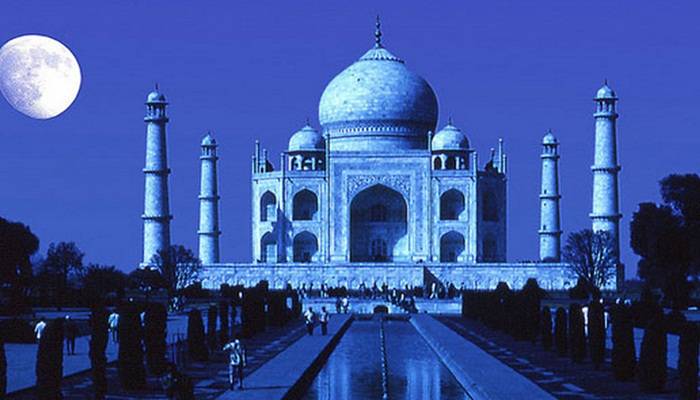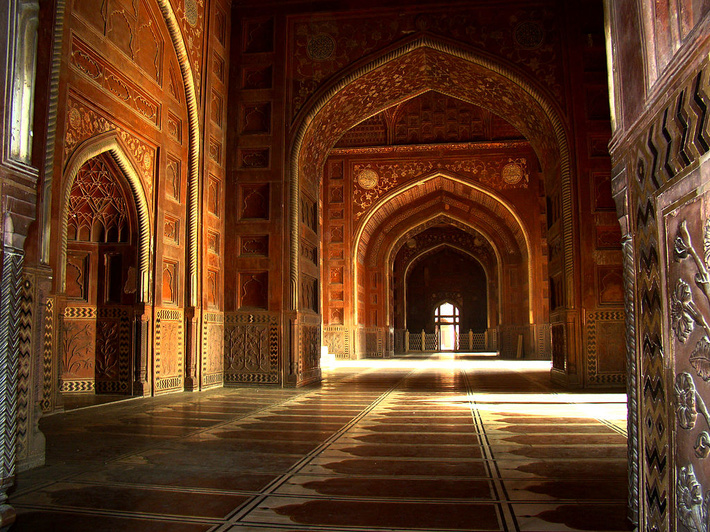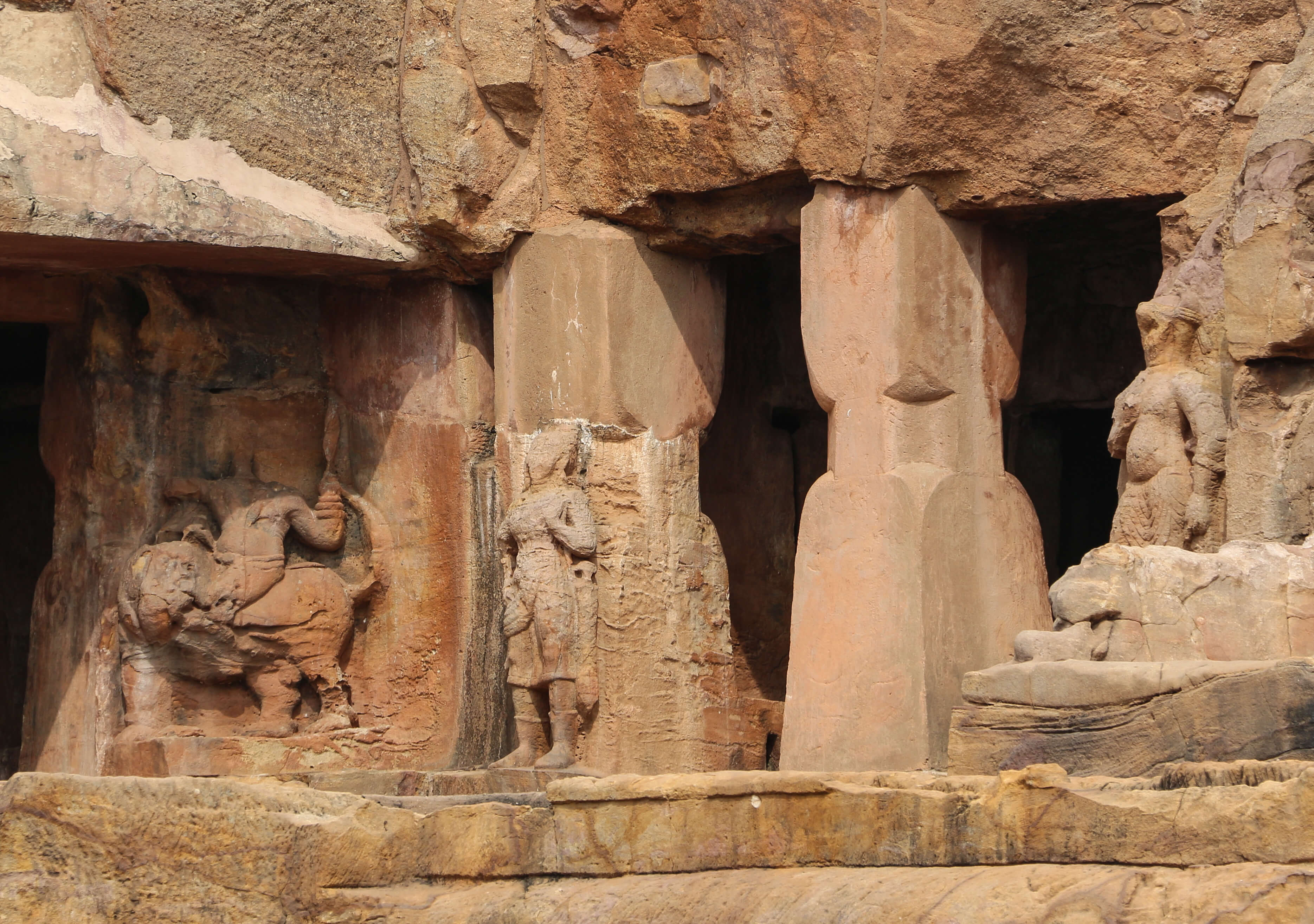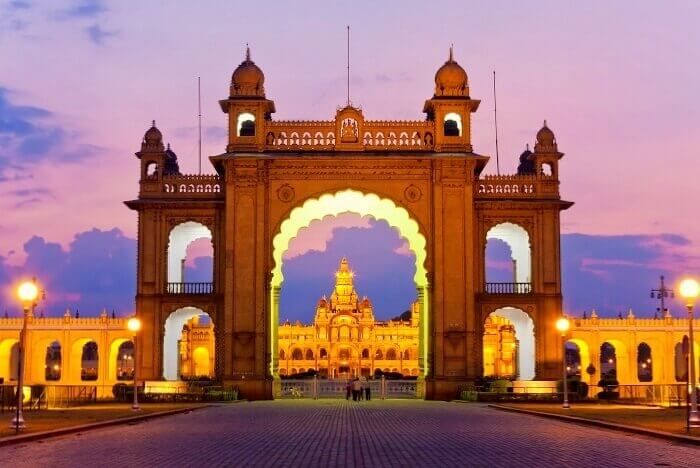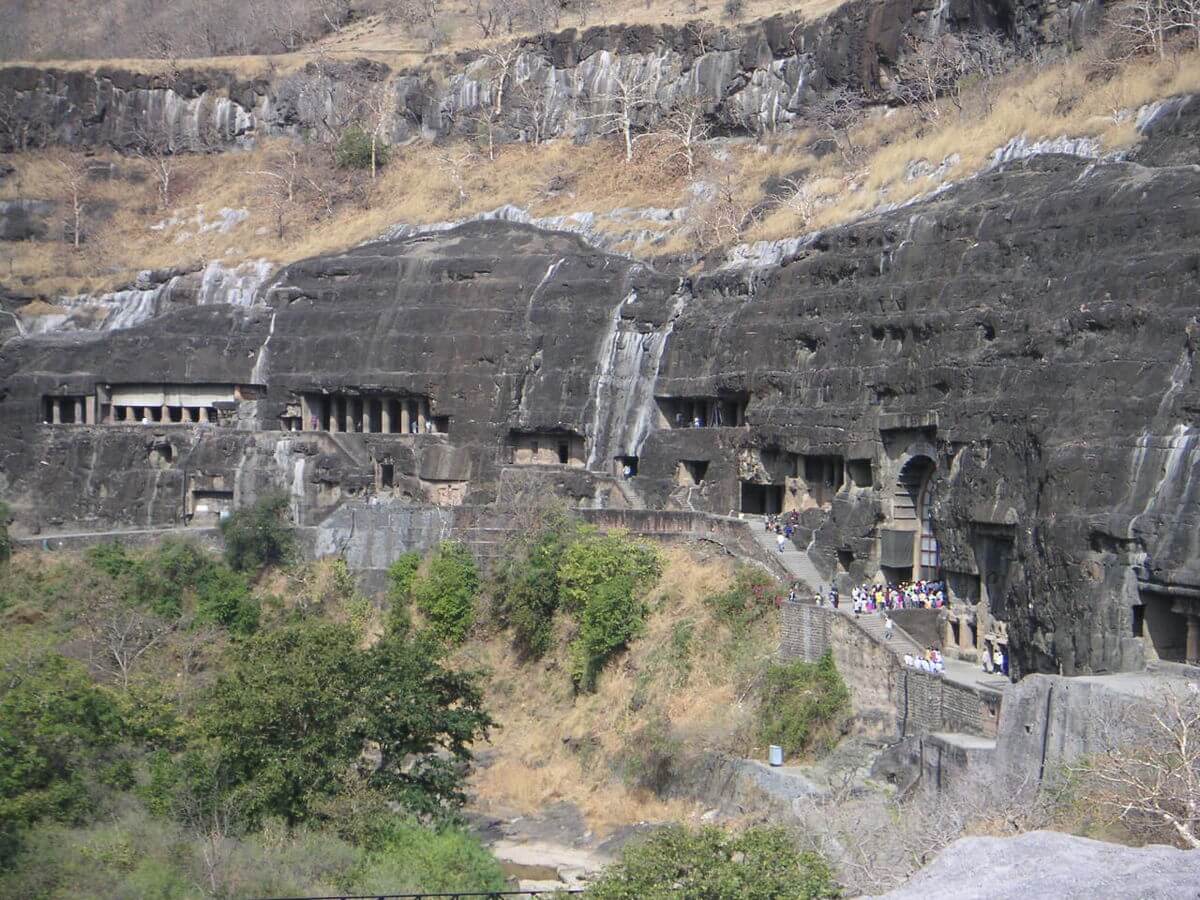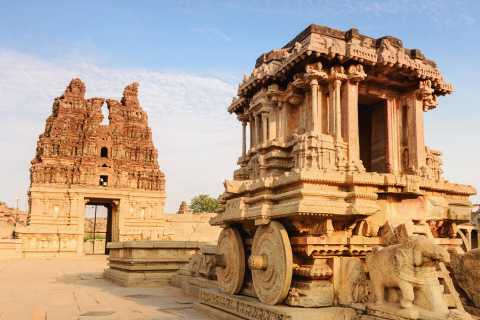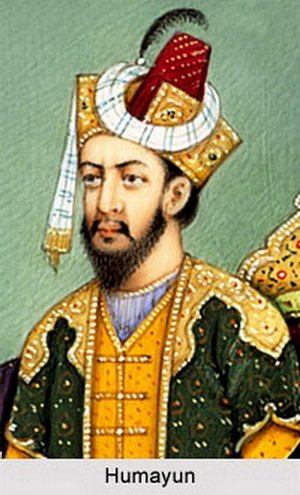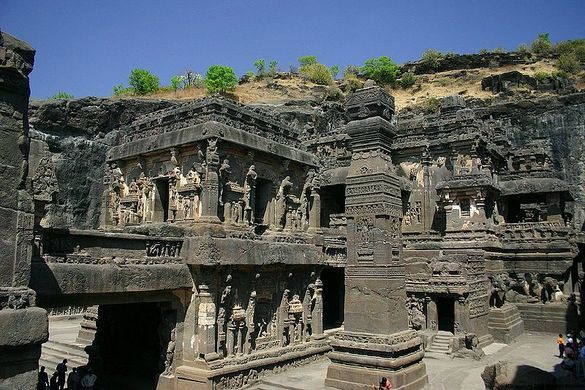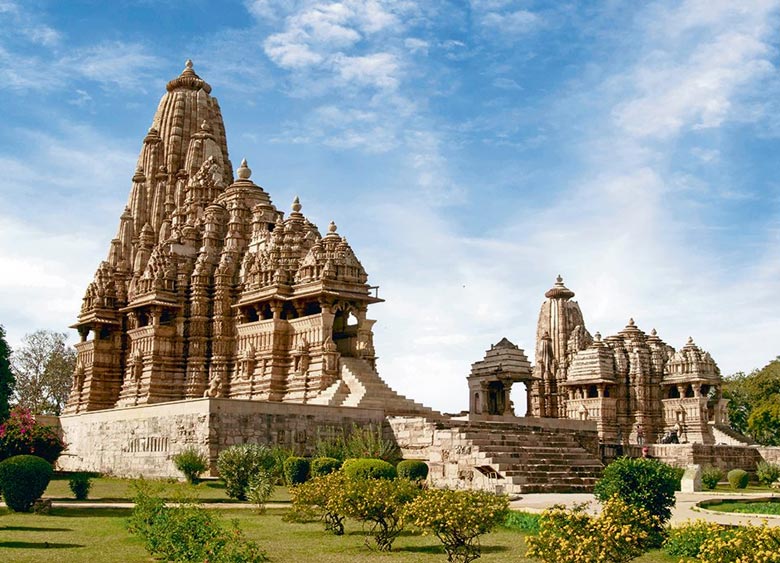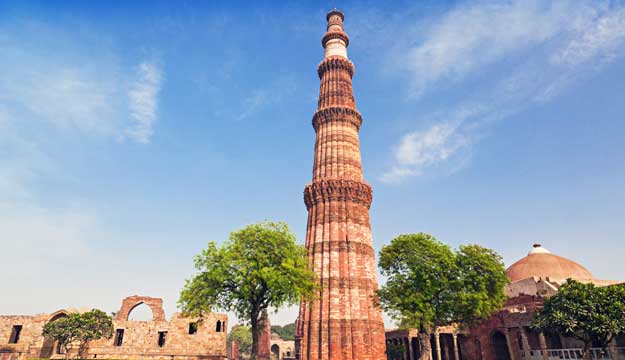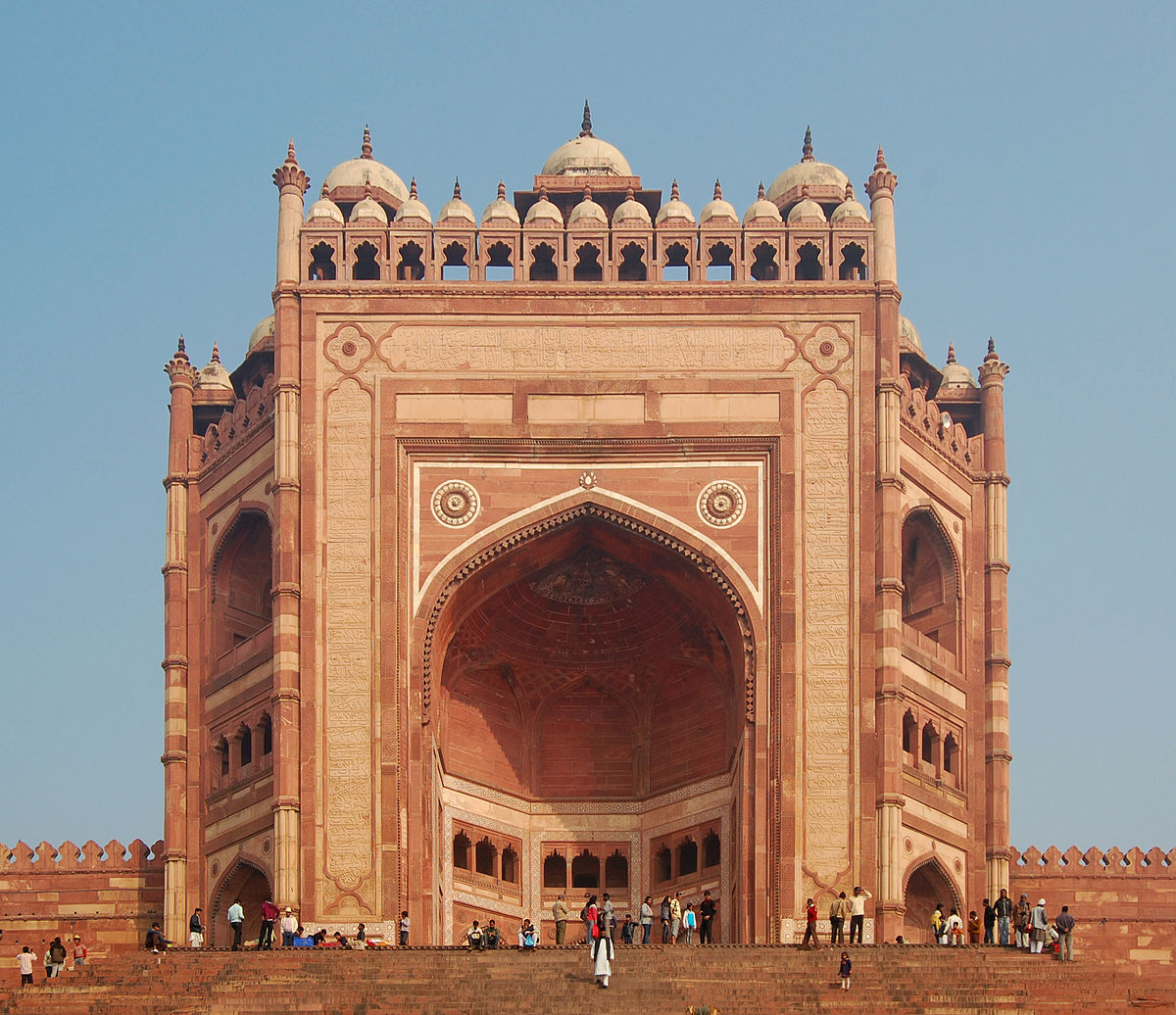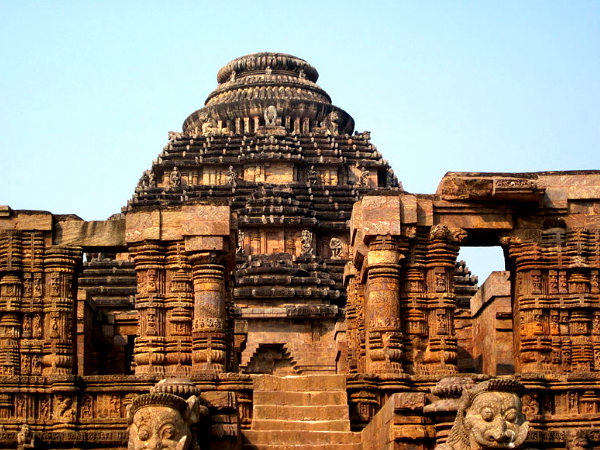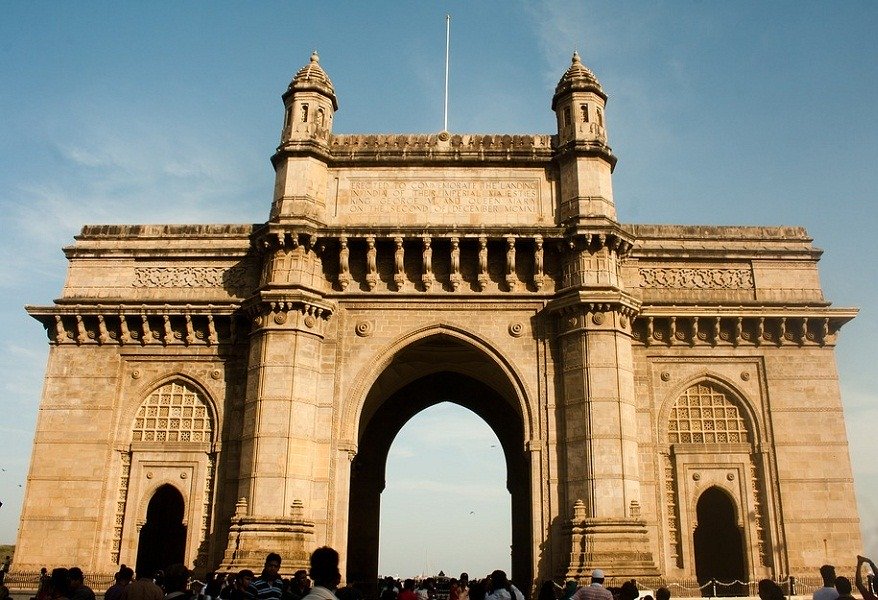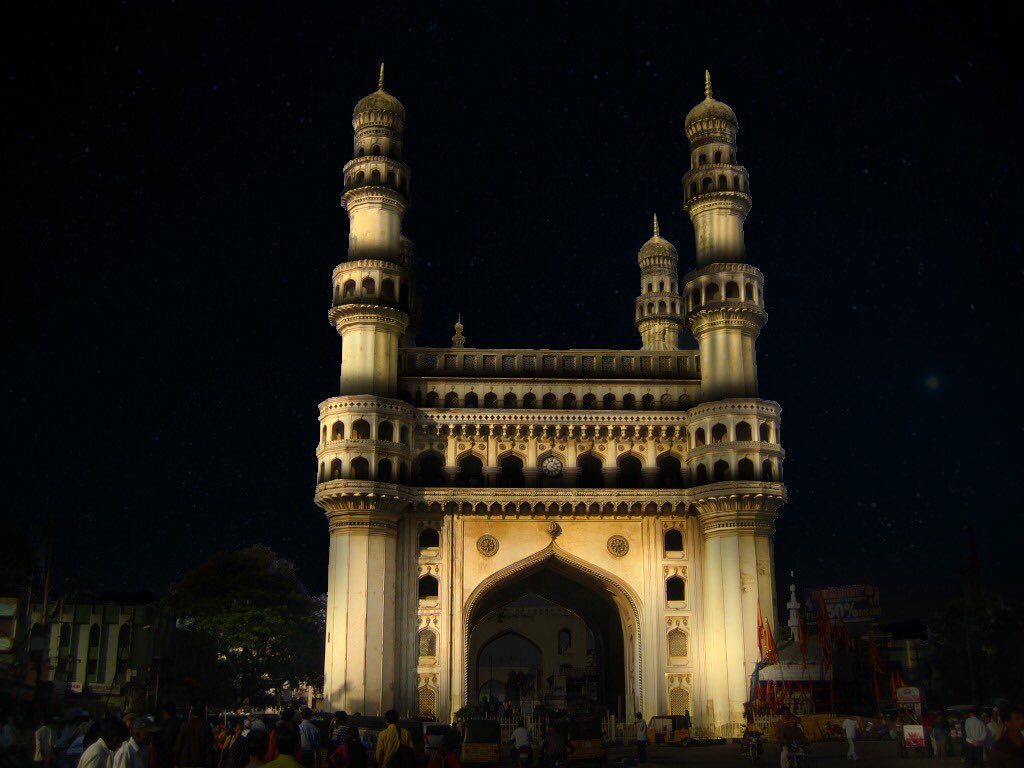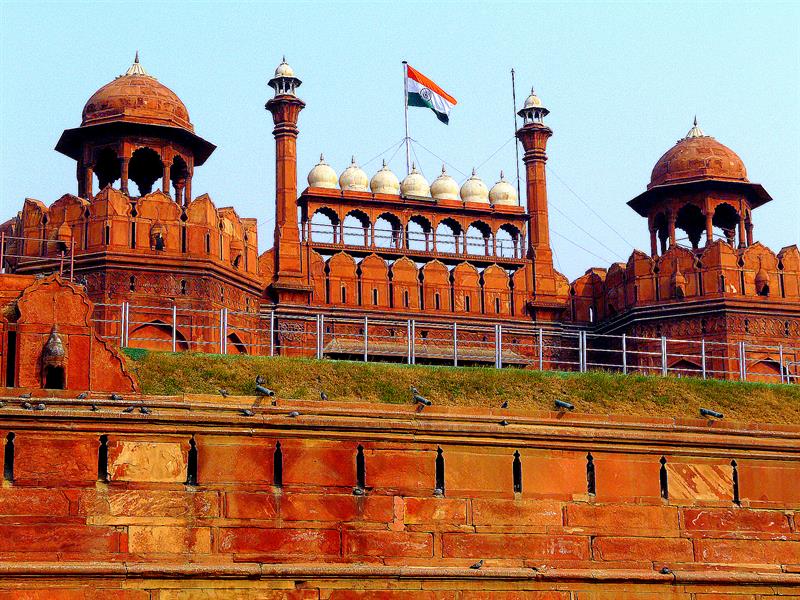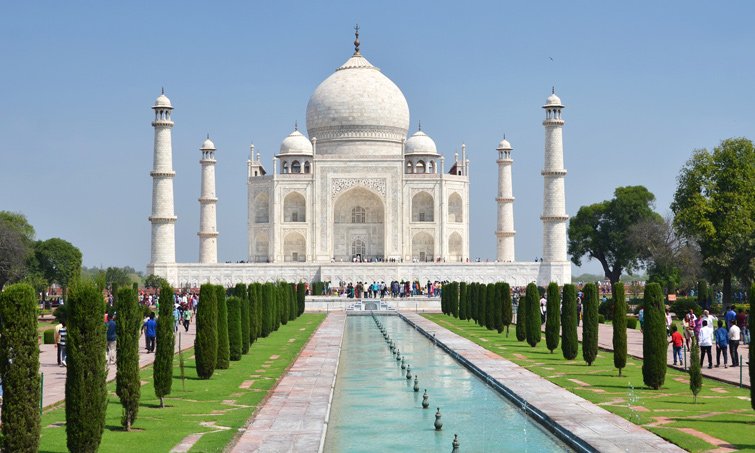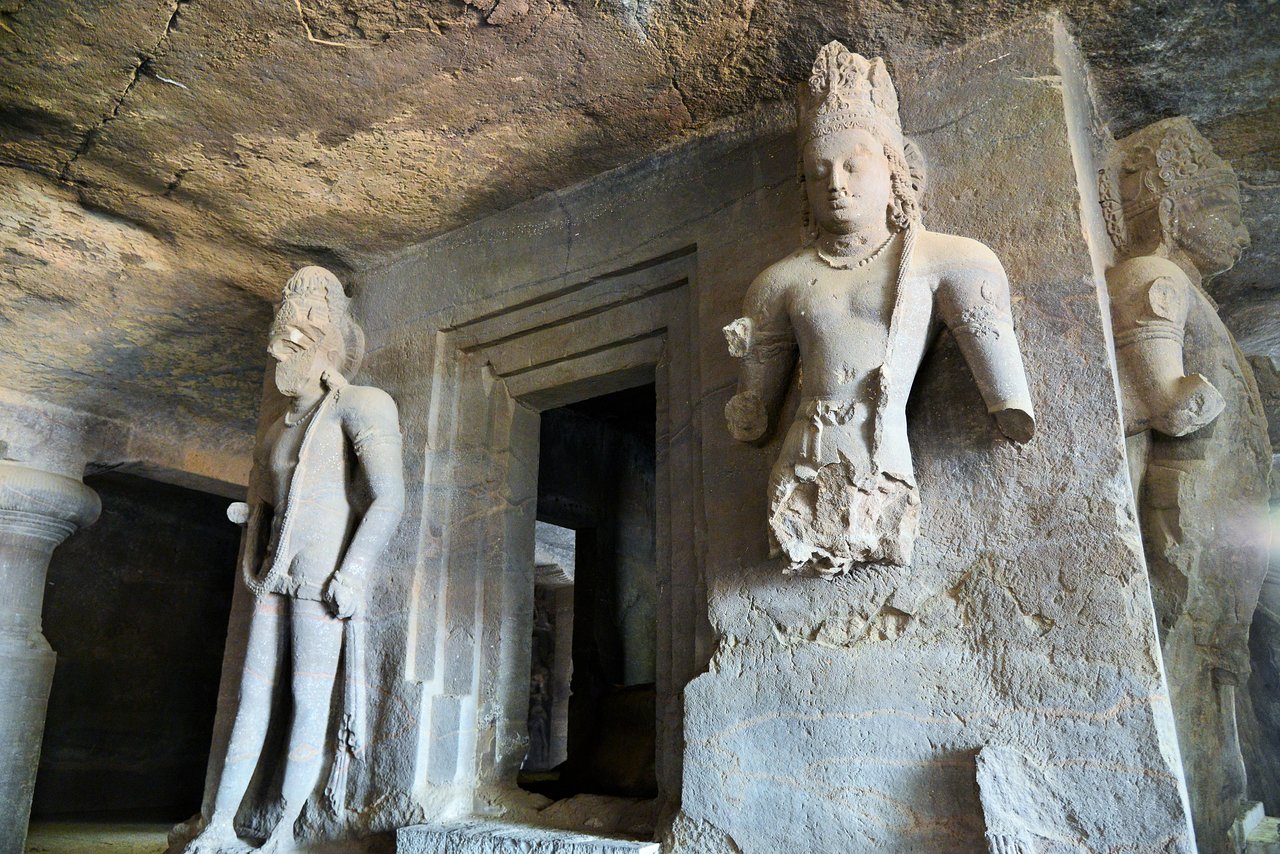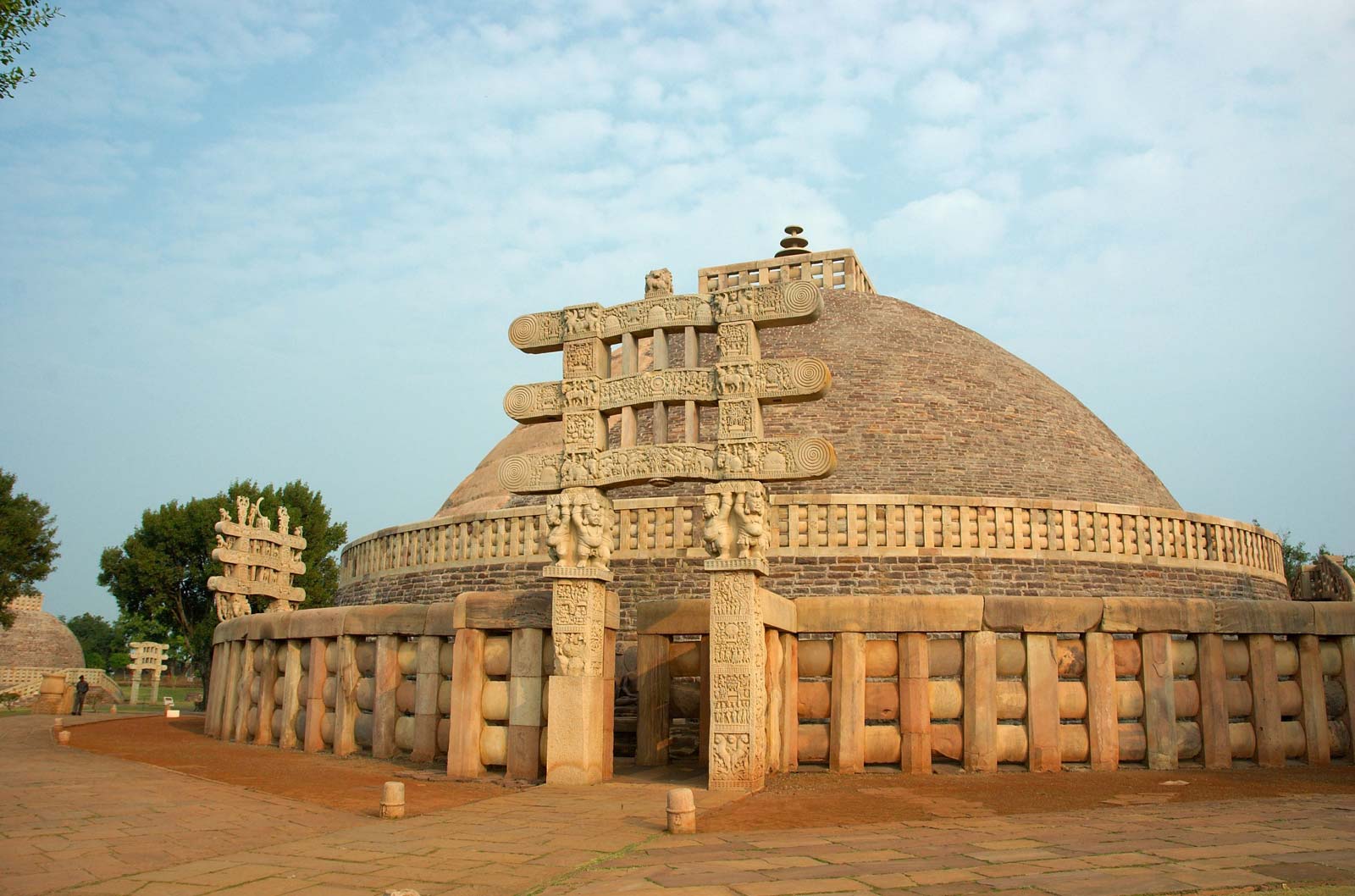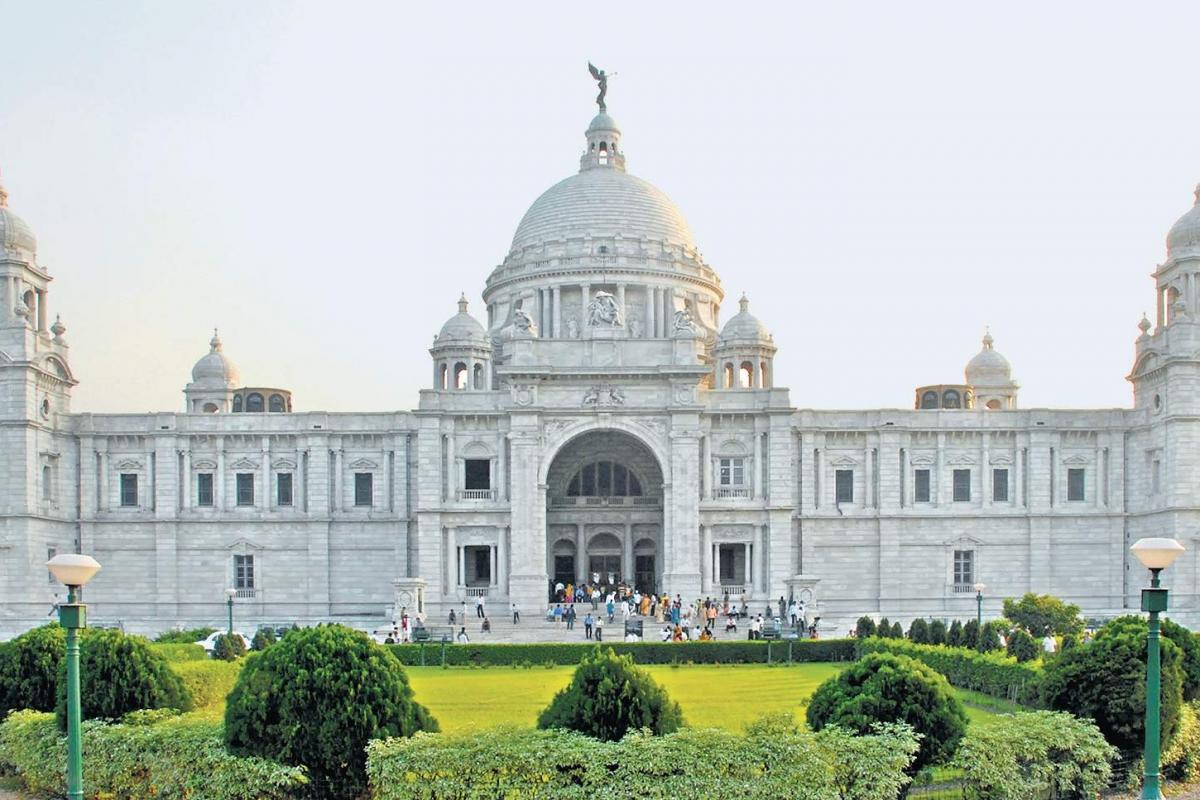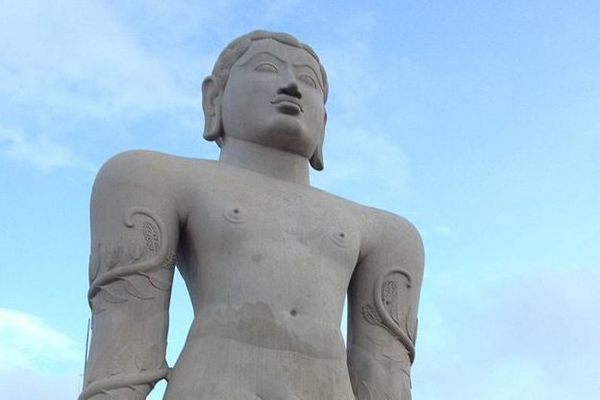- Home
- Monuments of India
- Taj Mahal in India
Taj Mahal in India
Updated 14-10-2022
Taj Mahal in India
Quick Facts:
Country: India
State: Uttar Pradesh
Location: Agra
Built: 1631-1653
Commissioned by: Mughal Emperor Shah Jahan
Built For Mumtaz Mahal
Architect: Ustad Ahmad Lahauri
Architectural Style: Mughal Architecture
Area: 17 hectares
Taj Mahal in India is one of the seven wonders of the World is located in Agra, Uttar Pradesh, India. Taj Mahal is one of the finest monuments built by Mughal emperor Shah Jahan in memory of his beloved wife Mumtaz Mahal. It is built on the banks of river Yamuna. Taj Mahal is the major tourist place in India
The city of Agra is famous for Taj Mahal and Agra fort both built by Shah Jahan. In fact, Akbar laid the foundation for the city of Agra and named it as Akarabad which later became popular as Agra. The beautiful mausoleum was designated as UNESCO World Heritage Site in1983. It is considered as one of the best examples for Mughal architecture.
Agra was one of the most important and powerful cities during Mughal period. Even today, Agra remains as one of the most important tourist destinations in India. Must see places in Agra are Agra Fort, Fatehpur Sikri (old and abandoned capital of Akbar) and Taj Mahal of course. With the presence of Taj Mahal, Agra has grown into a most sought-after place for tourists worldwide.
The city is well connected by rail/ road and air with all major cities in India. The three main railway stations in Agra are Agra Cantt, Agra fort railway station and Raja ki Mandi. Agra is 4 - 5 hour's drive from Delhi.
Shahjahan built Taj Mahal in memory of his beloved wife Mumtaz Mahal who died in the year 1631 after giving birth to their 14th child. The love between Shahjahan and Mumtaz was so intense that she used to travel with Shahjahan even on military camps.
It is said that they were inseparable. Mumtaz Mahal was a Persian named Arjumund Begum before marriage. Shahjahan fell in love with Mumtaz when he was just 15years old. Later after 5 years he married Mumtaz Mahal. The credit of constructing the seven wonder goes to Ustaad Lahuri who is the main architect, who is also the architect for Red fort in Delhi.
There is a saying that beauty lies in the eyes of the beholder but in case of Taj Mahal, it is just the other way around. Taj Mahal is beauty on its own. Taj Mahal displays different shades at different times of the day. It is pinkish in the morning, while it is milky white in the evening and golden colour when the moon shines. It is worth seeing Taj Mahal at night on a full moon day while rowing in the river Yamuna.
Architecture and design of Taj Mahal in India
The construction of the Taj Mahal was entrusted to a board of architects under the direct supervision of Shah Jahan. The architects involved included Abd ul-Karim Ma'mur Khan, Makramat Khan, and Ustad Ahmed Lahwari. Born in Lahore, Ustad Ahmed was not only a renowned architect but also a mathematician and astronomer. Taj Mahal is built in Mughal architecture style.
Known for symmetry, Taj Mahal is on a raised platform surrounded by four minarets. Inside one can see delicate mosaic works and marble walls adorned with intricate designs made up of precious stones.
The tomb stands tall and beautiful at the northern end of the garden along the riverbank and large gateway on the South. The mausoleum is constructed with white marble engraved with semi-precious stones which includes jade, crystal, lapis lazuli, amethyst and turquoise forming intricate designs with Pietra dura (pictorial mosaic work using semi-precious stones).
Its central dome is of 240 feet high and is surrounded by four smaller domes, four slender towers or minarets that stand tall at four corners round Taj Mahal.
The tomb which is higher than a modern 20-storey building took 22 years to complete with a workforce of 20,000. Craftsmen from as far as Turkey worked in the construction of this magnificent mausoleum.
The marble was bought from Makrana near Jodhpur in Rajasthan. Precious stones were imported from distant lands. It is alleged that on its completion, Shah Jahan ordered the right hand of all the workers to cut so they would not construct another Taj Mahal.
Calligraphy of TajMahal
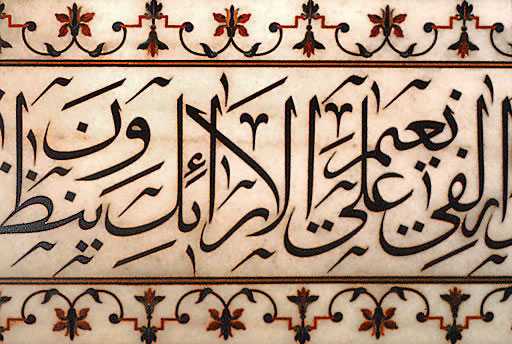
Taj Mahal is filled with verses from Quran written in calligraphy all around. Inside the mausoleum an octagonal marble chamber adorned with carvings and semi-precious stones houses the false tomb of Mumtaz Mahal.
The real remains of Mumtaz Mahal remain underneath at garden level. Arabic inscriptions with black marbles are used to design the South gate and main mausoleum. The text on the walls of Taj Mahal is written in thuluth script. This script is associated with Persian calligrapher Amanant Khan who was a resident of Mughal rule.
The verses are mainly taken from Holy book Quran. It consists of 22 passages and 14 whole chapters of this holy book. The texts chosen to refer broadly to themes of judgment and paradisiacal (belonging to the heaven or God) rewards for the faithful.
The inscription over the gateway invites the reader to enter Paradise, the abode of the faithful and reward for the righteous. As you go towards the main mausoleum the writing of the inscription's changes from paradiscal to judgmental. The exterior of the Taj Mahal is filled with verses from Quran the following are the verses
Surah Name (English) Surah 36 Ya Sin Sura 39 The Crowds Surah 48 Victory Surah 67 Dominion Surah 77 Those Sent-forth Surah 81 The Folding Up Surah 82 The Cleaving Asunder Surah 84 The Rending Asunder Surah 89 Daybreak Surah 91 The Sun Surah 93 Morning Light Surah 94 The Solace Surah 95 The Fig Surah 98 The Evidence Surah 112 The Purity of Faith
On the tomb of Mumtaz Mahal, the verse of Quran describes how God is compassionate to all human beings on this world and how God is by the side of every helpless and unfortunate person. All around her cenotaph and by the sides 99 times Allah name is written. The upper cenotaph has writings which beseech to Allah to allow his beloved to enter paradise. This is the most touching part in the whole of Taj Mahal calligraphy. A set of whole 14 chapters of the Quran are inscribed on the walls of Taj Mahal
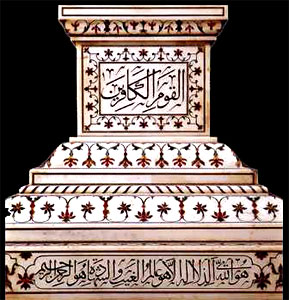
Taj Mahal maingate, garden and mosque
The Main gate
The main gate is the most important part of the Taj Mahal. It is also called as Darwaza-I Rauza. It is about 93 feet in height. The Taj Mahal itself stands on a raised platform of marble. Main gate is 93 foot high and 150 foot wide and is constructed from the red sandstone.
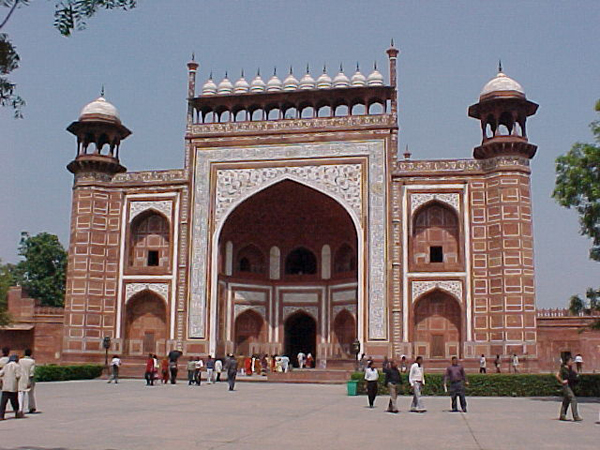 |
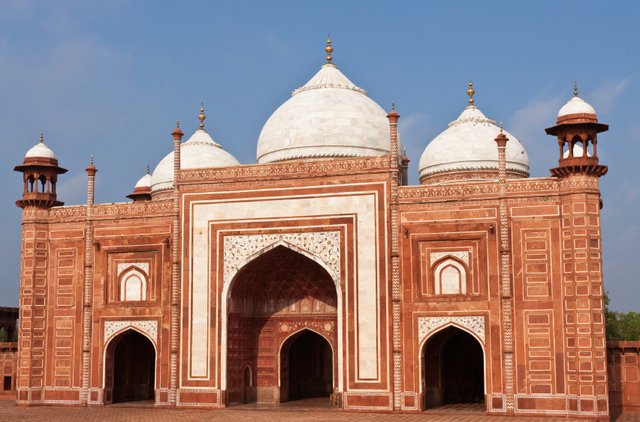 |
This is one of the five elements of the monument and was used as a main gate during construction as well. The main doorway is gothic architecture or ogival shape that rises the mid height of the structure.
At the corners of the gate are the octagonal shaped towers surrounded by the open dome pavilion. The beauty is further increased by the touch of Hindu motifs (elements of pattern). These motifs were made from semi-precious stones.
Even more beautifying the gateway is the red trident with white teardrop, with in the gateway the arch roof decoration is magnificent. The most important of the gateway is the stunning view of the Taj Mahal. The distance between the main gateway and Taj Mahal is well decorated with beautiful garden and fountain on both sides of the path
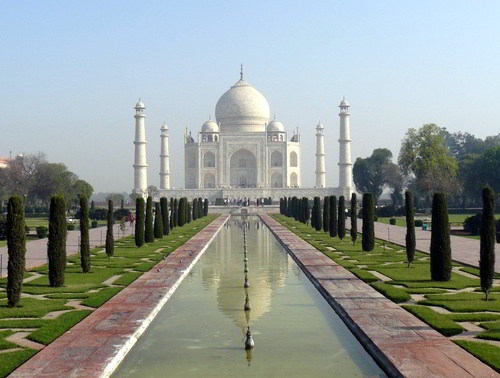
Taj Mahal garden:
Mughal architecture is incomplete without the beautiful gardens in them. TajMahal has stretches from the main gate till the plinth where the tomb of Mumtaz Mahal is there. The garden is geometrical symmetry in shape and is called as charbagh (four gardens).
The garden is beautifully decorated with trees, fountains, wide marble pathways on both the sides of the garden. Through the centre of the garden there are two big marble canals with long fountains in it.
They are lined up with Cyprus trees. Garden has a proper irrigation system with proper underground water pipes. Water is drawn from nearby river for the garden.
In the centre of the Taj Mahal there is a raised lotus shaped marble tank from which a clear view of the Taj Mahal is seen from all parts of the garden. The Taj Mahal Garden increases the beauty of the Taj Mahal with greenery all around and red sandstone main gate, red sandstone masques and peripheral wall.
Mosque
The mosque is on the western side of the Taj Mahal. Mosque is constructed from the Red Sand stones. As per the Muslim law it was compulsory to have a mosque nearby the mausoleum and it also offers symmetrical design to Taj Mahal architectural design. Used as a place of worship, the mosque faces the holy city of Mecca.
The entrance to the mosque called as Iwan has three small arches. In between the three arches are the four pinnacles. On the top of these arches are the dome constructed in white marbles. Within the mosque there is a Mihrab which means an indentation showing the direction of Mecca. The floor of mosque is constructed with the red stone which resembles the velvet shade.
There are 569 prayer mats in total. The interior walls of the mosque are adorned with calligraphy citing the name Allah and numerous citations from the Quran Sura 91. The main aspect of the mosque is it differentiates itself from the guest house through Mihrab. There is a small stone on the western boundary wall measuring 19ft by 6.5ft. It is believed that the remnants of Mumtaz Mahal were kept here when first bought to Agra until finally it was laid in Taj Mahal.
Minarets in Taj Mahal
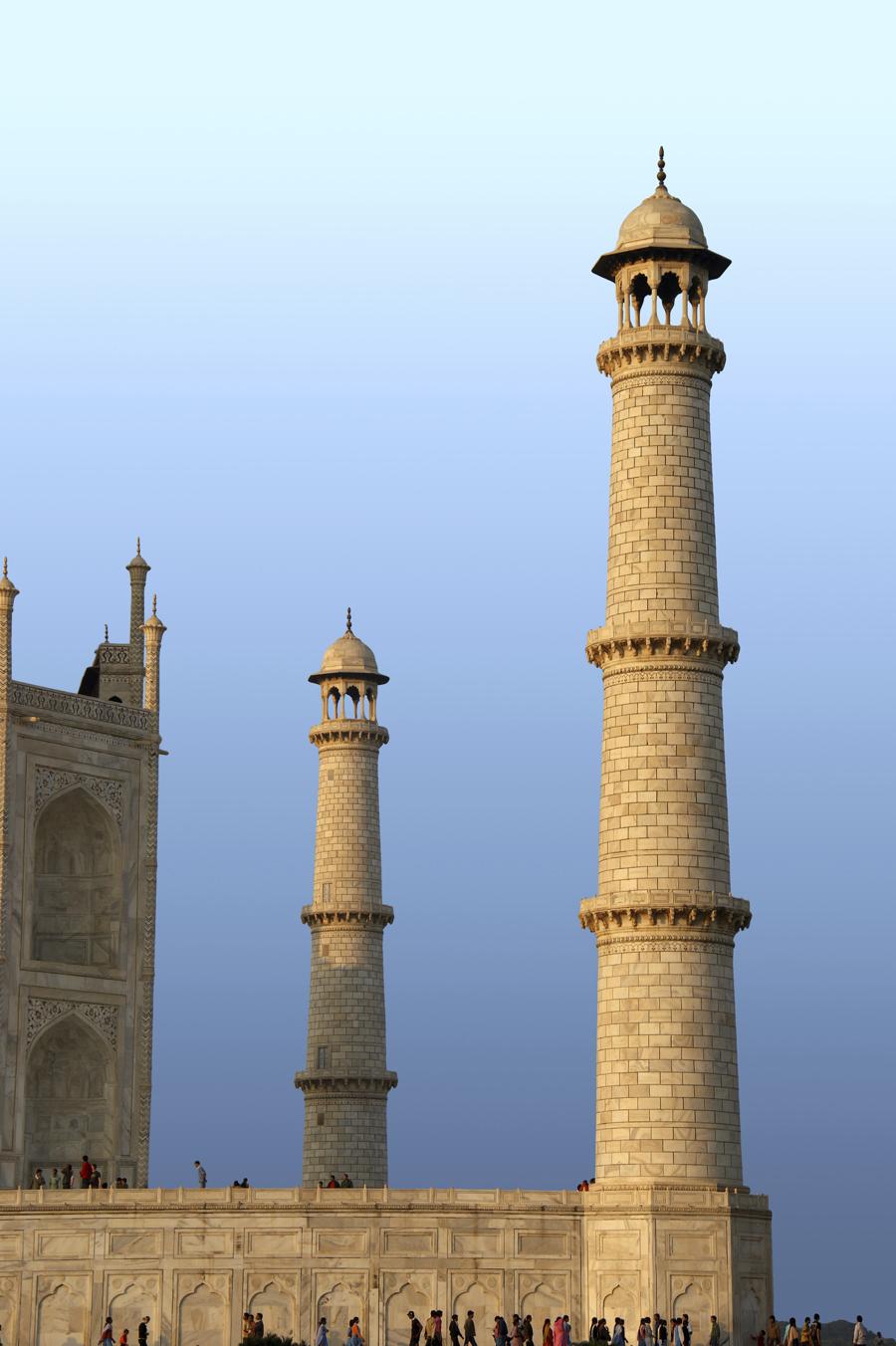 Minarets
MinaretsThe word 'minaret' is derived from the Arabic term Manar which means light house. The four minarets which are on the four sides of Taj Mahal are 138 feet in height. In the beginning Mughal architecture did not had minarets but after the construction of Taj Mahal minarets were the common design in the Mughal architecture.
The minarets have
octagonal base and cylindrical shaft topped by eight-sided open pavilion. Each
minaret consists of 3 balconies. The minarets are clad in white marble. The
entrance to these balconies is set inside the shaft. The top of each minaret
is finished with lotus petal design called as chhatris
Visiting hours
Visiting hours to Taj Mahal
- All day except Friday: from sunrise to sunset.
- On Full moon nights: from 8:30pm to 12:30 midnight.
- There are certain rules for night viewing. Only 400 people are allowed to view. Visitors are divided into 8 batches of 50 people in each group. Two days before full moon and two days after full moon are allowed, in total 5days in a month this facility is available.
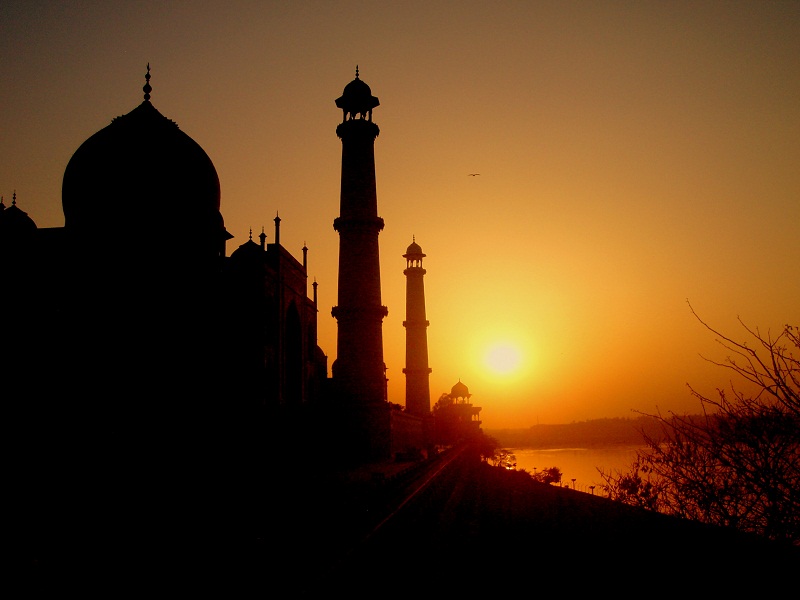
How to reach
How to reach Taj Mahal
By air
The nearest airport is Agra which is 7km from Taj Mahal. One can reach Delhi and take a cab from Delhi. It takes around 5 hours to reach Taj Mahal.
By rail
Agra is well connected with trains from different parts of India. The main station is at Agra cantt, other small stations are Raja ki mandi and Agra fort.
By road
Good taxis services are available from Delhi, Jaipur and Gwalior.
Update on coronavirus in India
Affiliate Disclosure:
If you make any purchase via a link on this site, I may receive a small commission with no added cost to you.
